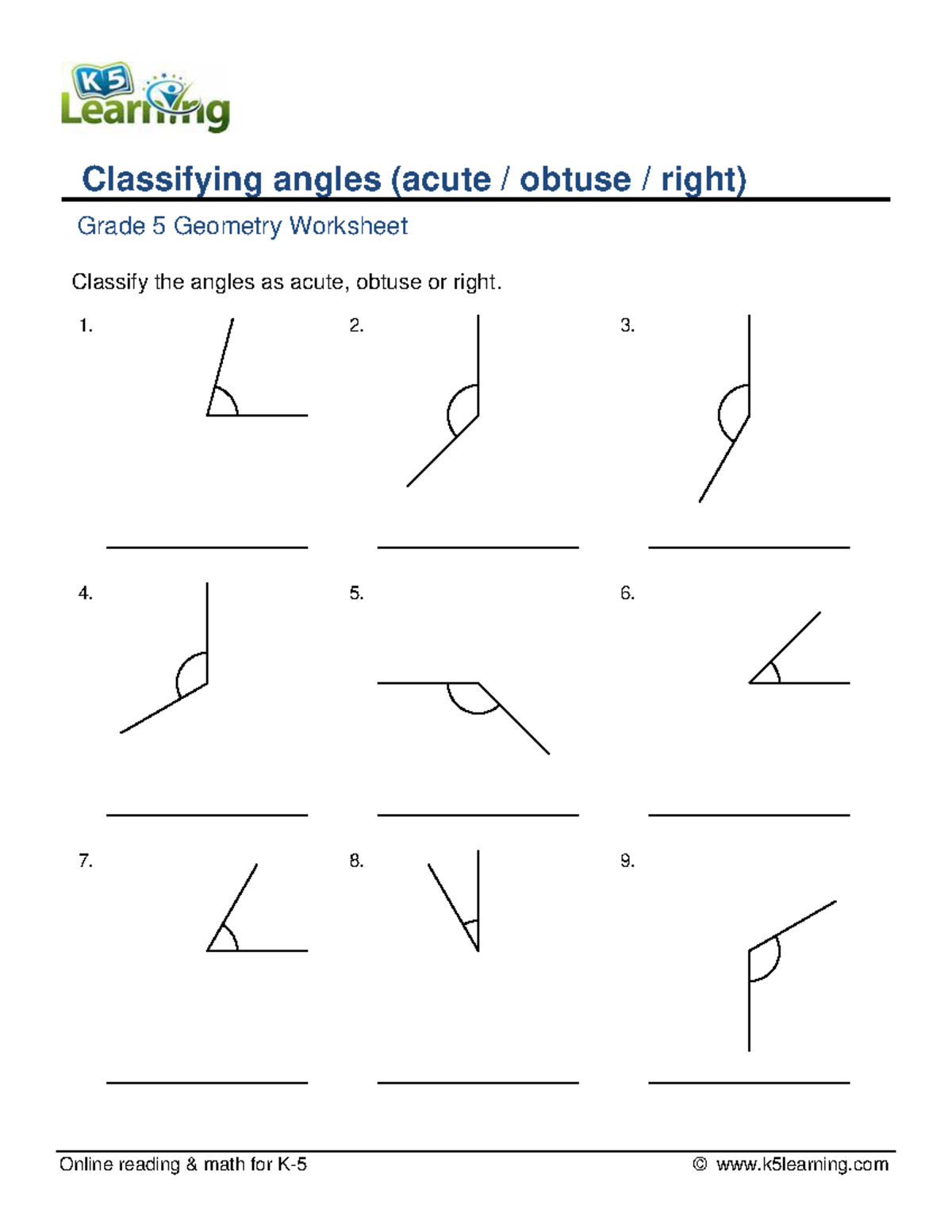Angles are an important concept in mathematics and geometry. They can be classified based on their measurements and relationships with other angles. Understanding how to classify angles is essential for solving geometry problems and identifying different types of angles in real-world situations.
A classifying angles worksheet is a helpful tool for students to practice identifying and categorizing angles. These worksheets typically include a variety of angles for students to classify, such as acute, obtuse, right, straight, and reflex angles. By completing these worksheets, students can strengthen their understanding of angle classifications and improve their problem-solving skills.
One common classification of angles is based on their measurements. An acute angle is less than 90 degrees, a right angle is exactly 90 degrees, an obtuse angle is greater than 90 degrees but less than 180 degrees, and a straight angle is exactly 180 degrees. Additionally, a reflex angle is greater than 180 degrees but less than 360 degrees. Students can use protractors to measure angles and determine their classifications.
Angles can also be classified based on their relationships with other angles. Complementary angles add up to 90 degrees, supplementary angles add up to 180 degrees, and vertical angles are opposite each other and have equal measurements. By practicing with a classifying angles worksheet, students can identify these relationships and apply them to solve angle-related problems.
Another important concept in classifying angles is understanding angle bisectors. An angle bisector divides an angle into two congruent angles. By recognizing angle bisectors in geometric figures, students can determine angle measurements and solve geometry problems more effectively. Classifying angles worksheets often include questions that require students to identify angle bisectors and their relationships with other angles.
In conclusion, a classifying angles worksheet is a valuable resource for students to practice identifying and categorizing angles based on their measurements and relationships with other angles. By completing these worksheets, students can enhance their understanding of angle classifications and develop their problem-solving skills in geometry. Whether measuring angles with protractors or identifying angle bisectors, classifying angles worksheets help students build a strong foundation in geometry and mathematics.
